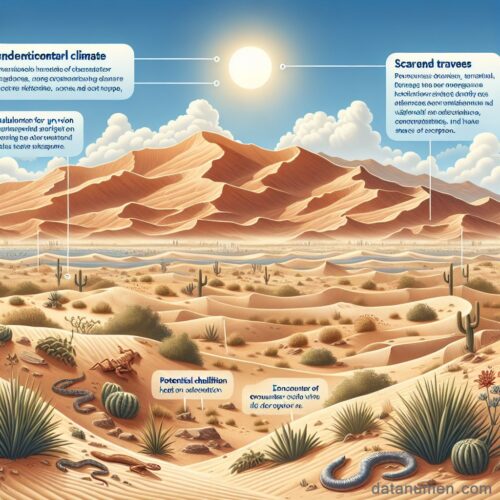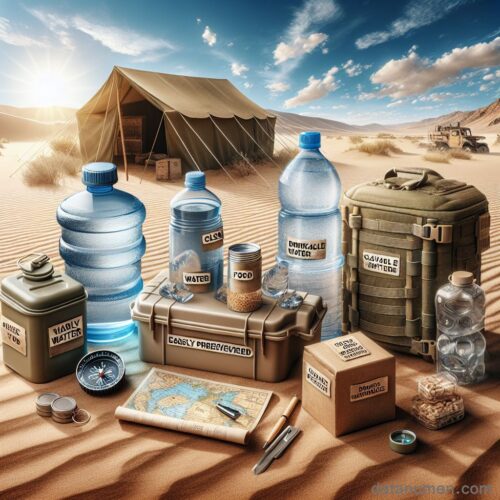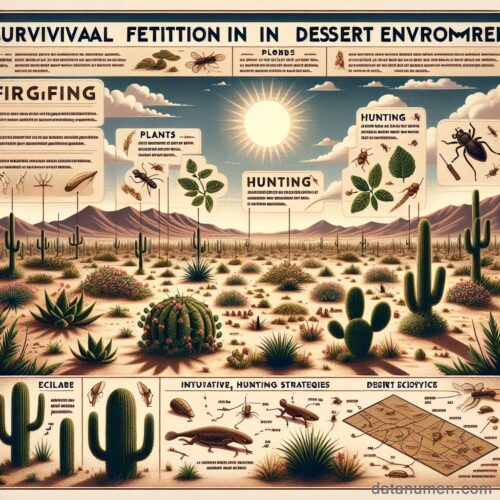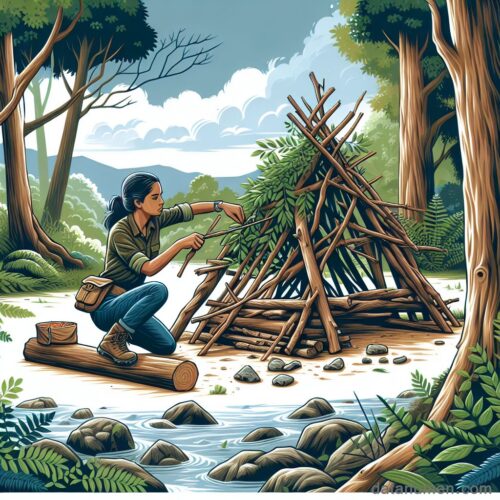1. Understanding the Environment
In order to successfully navigate the desert, it is crucial to have a good understanding of the environment you will be facing. The desert climate can be harsh, with scorching temperatures during the day and drastic drops at night. It is important to be prepared for these extreme conditions by bringing appropriate clothing and gear.
1.1 Climate
The desert climate is characterized by low precipitation and high temperatures. Be prepared for intense heat during the day and cold nights. Stay hydrated and protect yourself from the sun by wearing sunscreen and a hat.
1.2 Terrain
The terrain of the desert can vary from sandy dunes to rocky mountains. Be aware of your surroundings and watch out for obstacles such as cacti or poisonous plants. Plan your route carefully to avoid getting lost in the vast expanse of the desert.
1.3 Wildlife
The desert is home to a variety of wildlife, including snakes, scorpions, and other creatures. Be cautious when exploring the desert and avoid touching any animals you encounter. Keep a safe distance and be aware of potential threats.

2. Essential Supplies
Surviving in the desert requires careful planning and preparation. One of the most essential supplies for desert survival is water. It is crucial to stay hydrated to avoid dehydration in the hot and arid desert environment. It is recommended to carry at least one gallon of water per person per day.
Food is another important consideration for desert survival. Pack non-perishable items that are high in calories and nutrients to sustain your energy levels. Items such as granola bars, nuts, and dried fruit are lightweight and easy to carry. Remember to pack enough food to last for the duration of your trip.
Shelter is vital for protection against the harsh desert elements. Carry a lightweight tent or tarp to provide shelter from the sun, wind, and potential sandstorms. It is also important to have a sleeping bag or blankets to stay warm during the cold desert nights.
Navigation tools are crucial for finding your way in the vast desert landscape. A map of the area, a compass, and a GPS device are essential for navigating through the desert and avoiding getting lost. It is important to familiarize yourself with the tools and how to use them before embarking on your desert adventure.

3. Water Sourcing
Exploring different methods of finding and purifying water in the desert is crucial to staying hydrated and alive. In such harsh environments, it is essential to be prepared and knowledgeable about how to secure water sources.
Exploration of Water Sources
When in the desert, it is important to know where to look for water. Potential sources include oases, dry riverbeds, underground streams, and even plants such as cacti that store water. By carefully observing the environment and being resourceful, you can increase your chances of finding water in the desert.
Purification Techniques
Once water is found, it is essential to purify it before consumption to avoid dehydration or illness. Methods of purifying water in the desert include boiling, using water purification tablets, or using a portable water filter. These methods can help remove harmful bacteria and pathogens, ensuring the water is safe to drink.

Food for Survival
When faced with a survival situation in the desert, knowing how to find food is crucial. Edible plants and insects can provide much-needed nutrition to keep you going. Learning to identify which plants and insects are safe to eat is an important skill to develop. Look for plants like cacti, mesquite beans, and prickly pear fruits, which can offer hydration and sustenance. Insects like ants, grasshoppers, and termites are also good sources of protein.
Foraging for Edible Plants
Foraging for edible plants in the desert requires a keen eye and knowledge of what to look for. Avoid plants with milky sap or a bitter taste, as they may be toxic. Instead, focus on plants with clear sap and a mild flavor. Be cautious of plants with thorns or spikes, as they may cause injury. Always wash plants thoroughly before consuming to remove any dirt or contaminants.
Hunting Small Game
Hunting small game in the desert can provide a more substantial source of protein. Look for animals like rabbits, squirrels, and birds as potential targets. Constructing simple traps or snares can be an effective way to catch small game without expending too much energy. Remember to be ethical and respectful when hunting, and always follow local laws and regulations regarding hunting.

5. Navigation Skills
Mastering the art of using landmarks, the sun, and the stars is crucial for navigating through the desert and avoiding getting lost.
Making Use of Landmarks
One key aspect of navigation in the desert is the ability to identify and utilize landmarks. These can include prominent rock formations, distinctive trees, or even man-made structures. By paying close attention to these landmarks, you can create a mental map of your surroundings and better orient yourself.
Understanding the Sun
The position of the sun can provide valuable information for navigation. By observing the sun’s movement throughout the day, you can determine the cardinal directions and adjust your course accordingly. This can help you stay on track and reach your destination more efficiently.
Navigating by the Stars
During nighttime navigation, the stars can serve as reliable guides. By familiarizing yourself with key constellations and using them to navigate, you can maintain your sense of direction even in the absence of other landmarks. This skill is especially useful when visibility is limited.
By honing your navigation skills and mastering the use of landmarks, the sun, and the stars, you can navigate confidently through the desert and ensure that you stay on course throughout your journey.

6. Shelter Building
Discover how to construct effective shelters using natural materials to protect yourself from extreme heat and cold.
Effective Shelter Construction
Learn the essential skills for building shelters that will keep you safe and comfortable in harsh weather conditions. Utilize natural materials such as branches, leaves, and mud to create sturdy structures that can shield you from extreme heat and cold.
Protecting Yourself from the Elements
Understand the importance of choosing the right location for your shelter to maximize protection from the elements. Discover techniques for insulating your shelter to retain heat in cold weather and stay cool in hot climates.
Improvising with Available Resources
Explore ways to adapt your shelter-building techniques based on the materials available in your surroundings. Learn how to be resourceful and creative in constructing shelters with limited resources to ensure your safety and well-being.
Additional Tips and Tricks
Get insider tips on enhancing the durability and effectiveness of your shelter, such as reinforcing weak spots, waterproofing materials, and creating ventilation openings. Master the art of shelter building to be prepared for any outdoor adventure or survival situation.

7. Survival Psychology
When faced with the challenges of surviving alone in the desert, it is crucial to understand the mental and emotional hurdles that may arise. These challenges can range from feelings of isolation to fear and uncertainty about the future.
One key aspect of survival psychology is staying positive and motivated. This involves maintaining a hopeful outlook and finding ways to keep your spirits up during difficult times. By focusing on the small victories and achievements, you can boost your morale and resilience.
It is important to acknowledge the emotional challenges that come with being in a survival situation. Feelings of fear, anxiety, and despair are normal, but it is essential to find healthy ways to cope with these emotions. This could include practicing mindfulness, engaging in physical activity, or journaling your thoughts and feelings.
Another critical aspect of survival psychology is to set realistic goals and prioritize tasks. By breaking down the challenges into smaller, manageable steps, you can maintain a sense of control and accomplishment. This will not only help you stay focused but also provide a sense of direction during uncertain times.
In conclusion, survival psychology plays a vital role in ensuring your mental and emotional well-being during a desert survival scenario. By understanding the challenges and implementing strategies to stay positive and motivated, you can increase your chances of survival and overcome the obstacles that come your way.

Rescue Strategies
In this section, you will learn essential skills to increase your chances of being rescued in emergency situations. One crucial aspect is knowing how to signal for help. By using signals such as mirror flashes, whistle blasts, or creating symbols in an open area, you can attract the attention of potential rescuers. This communication can be vital in remote locations where visibility may be limited.
Another key strategy is creating rescue fires. By building a fire in a strategic location, you can increase your visibility and attract attention. Using materials that produce thick smoke, such as green vegetation or rubber, can enhance the effectiveness of your rescue fire. Remember to keep the fire well-maintained and visible at all times to maximize its effectiveness.
Lastly, knowing how to attract attention is essential for increasing your chances of being rescued. Whether it’s by creating large SOS signals on the ground or using a signal mirror to reflect sunlight, these methods can help rescuers locate you more quickly. Additionally, making noise by shouting, blowing a whistle, or banging on objects can also signal your presence to potential rescuers.

Leave a Reply